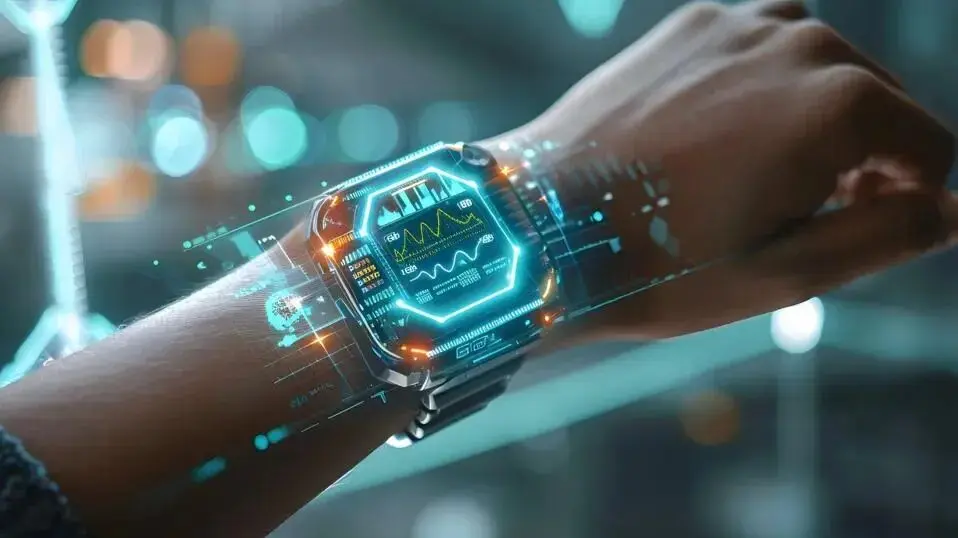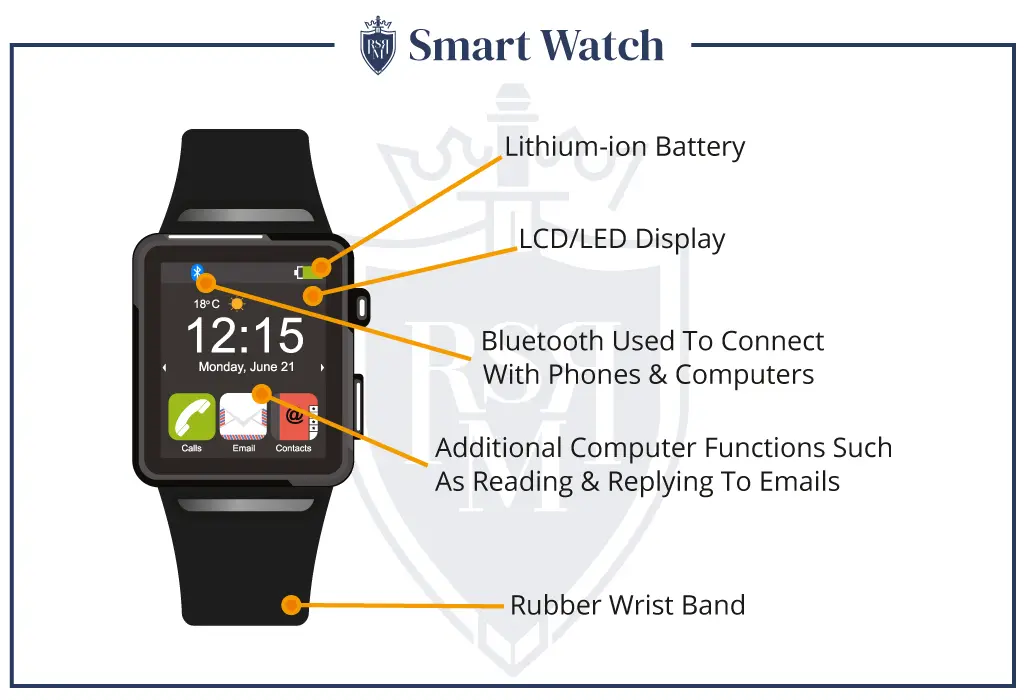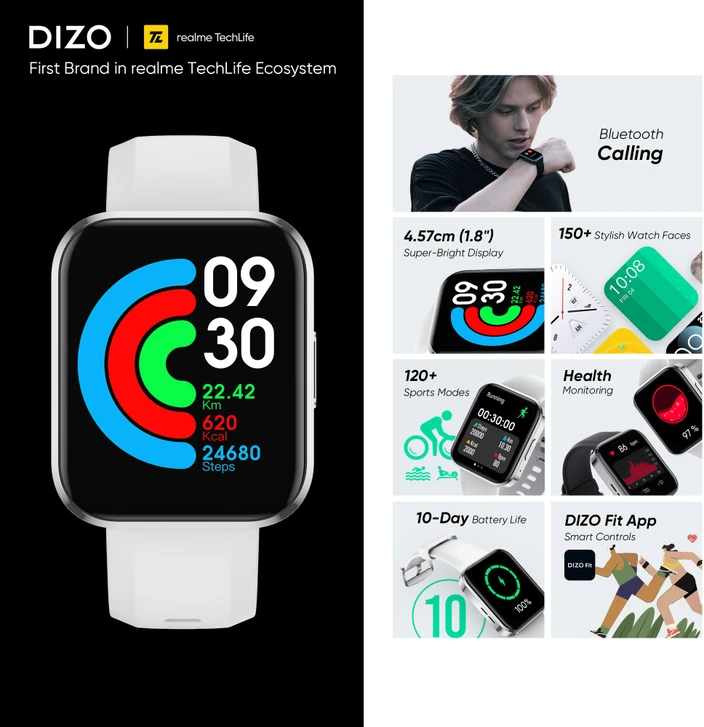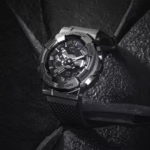The Ultimate Guide to Modern Wearable Technology
Smart display wrist watches have revolutionized how we interact with technology, transforming the traditional timepiece into a comprehensive digital companion. With the global wearable display market projected to reach $28.6 billion by 2034, these innovative devices represent the convergence of fashion, functionality, and cutting-edge display technology.

Understanding Smart Display Technology in Wearables
The Evolution of Display Technologies
Modern smart display wrist watches leverage advanced screen technologies that deliver exceptional visual experiences while maintaining energy efficiency. The transition from basic LCD screens to sophisticated OLED and AMOLED displays has fundamentally changed user expectations.
AMOLED (Active-Matrix Organic Light-Emitting Diode) displays have emerged as the gold standard for premium smartwatches. These displays offer several key advantages:
- Superior Power Efficiency: Each pixel is individually illuminated, allowing for precise power management and extended battery life
- Vibrant Color Reproduction: Deep blacks and vivid colors create stunning visual experiences
- Always-On Display Capability: Low power consumption enables continuous display functionality
- Thinner Profile: No backlight requirement reduces overall device thickness and weight
The Samsung Galaxy Watch series exemplifies AMOLED excellence with displays reaching up to 3,000 nits of brightness, ensuring visibility even in direct sunlight. Similarly, the Apple Watch Series 10 features LTPO3 OLED technology with 2,000 nits peak brightness, delivering crisp visuals and efficient power management.
A smart display wristwatch, more commonly known as a smartwatch, is a wearable computer that takes the form of a traditional wristwatch but offers a wide range of functionalities beyond simply telling time. These devices have evolved significantly from their early, bulky predecessors to become sleek, powerful, and highly integrated with our daily lives.
Functionalities and Features
Smartwatches are essentially a compact extension of your smartphone, providing convenient access to information and control from your wrist. Key features include:
- Connectivity: Most smartwatches connect to a smartphone via Bluetooth to access data and notifications. Some advanced models also feature Wi-Fi or even independent cellular (LTE/eSIM) connectivity, allowing them to make calls, send messages, and access the internet without being tethered to a phone.
- Notifications and Communication: They display notifications from your phone, such as incoming calls, text messages, emails, and social media alerts. Many models also allow you to answer calls, send quick replies, and control media playback from your wrist.
- Health and Fitness Tracking: This is a major selling point. Smartwatches are equipped with a variety of sensors to monitor your health and activity. This includes:
- Activity tracking: Pedometer (step counting), calorie burn, and distance traveled.
- Heart rate monitoring: Continuous or on-demand heart rate tracking.
- Sleep tracking: Monitoring sleep cycles, duration, and quality.
- Specialized sensors: Some high-end models have advanced features like ECG (electrocardiogram) for heart health, SpO2 (blood oxygen saturation) monitoring, and even skin temperature or blood pressure tracking.
- GPS and Navigation: Built-in GPS is a common feature, especially in watches geared towards fitness and outdoor activities. It allows for accurate tracking of running routes, cycling paths, and provides turn-by-turn navigation on your wrist.
- Contactless Payments: Many smartwatches are equipped with NFC (Near-Field Communication) technology, allowing you to make secure, contactless payments at compatible terminals.
- Customization: Users can personalize their smartwatch with various watch faces, straps, and downloadable apps to match their style and needs.

Types of Smartwatch Displays
The display is a crucial component that dictates a smartwatch’s visual quality, battery life, and overall design. The most common display technologies include:
- AMOLED (Active Matrix Organic Light Emitting Diode): Known for its vibrant colors, deep blacks, and excellent contrast. AMOLED displays are energy-efficient, especially when displaying dark colors, as they can turn off individual pixels. They allow for thinner watch designs but can be more expensive and are susceptible to “burn-in” over time with static images.
- LCD (Liquid Crystal Display) and TFT-LCD (Thin Film Transistor Liquid Crystal Display): These are common in more affordable smartwatches. They offer good brightness and color accuracy but are generally less power-efficient than AMOLED. They also tend to be thicker and have more limited viewing angles.
- E-Ink (Electronic Ink): This technology is similar to that found in e-readers. E-Ink displays are exceptionally power-efficient and highly readable in direct sunlight, mimicking the look of paper. Their major drawbacks are a limited color palette (often monochrome) and a slow refresh rate, making them unsuitable for animations or videos.
Evolution and History
The concept of a “smart” watch has been around for decades, with early attempts in the 1970s and 80s from companies like Seiko. These early models had basic functions like calculators and data storage.
- 1990s: The Timex Datalink (co-developed with Microsoft) was a significant milestone, being the first watch to wirelessly download data from a computer. Samsung also released one of the first “watch phones” in this era.
- 2000s: Companies like IBM and Fossil experimented with watches that ran Palm OS or Linux, featuring early touchscreens and more advanced computing power. Microsoft’s “SPOT” (Smart Personal Object Technology) was an ambitious attempt to provide at-a-glance information via FM radio waves.
- 2010s to Present: The market truly took off with the rise of the modern smartphone. Pebble’s successful Kickstarter campaign in 2012 demonstrated a strong consumer demand. This led to tech giants like Samsung and, most notably, Apple, entering the market. The Apple Watch, released in 2015, set a new standard for what a smartwatch could be, blending health tracking, seamless smartphone integration, and a sophisticated user experience.
Today, smartwatches are a mainstream consumer product, with a wide variety of models catering to different needs and budgets, from dedicated fitness trackers to luxury fashion accessories. The market is expected to continue growing, with future innovations focusing on more advanced health monitoring, longer battery life, and deeper integration with smart home ecosystems and AI assistants.
A smart display wristwatch, more commonly known as a smartwatch, is a wearable computer that takes the form of a traditional wristwatch but offers a wide range of functionalities beyond simply telling time. These devices have evolved significantly from their early, bulky predecessors to become sleek, powerful, and highly integrated with our daily lives.
Core Functionalities and Features
Smartwatches are essentially a compact extension of your smartphone, providing convenient access to information and control from your wrist. Key features include:
- Connectivity: Most smartwatches connect to a smartphone via Bluetooth to access data and notifications. Some advanced models also feature Wi-Fi or even independent cellular (LTE/eSIM) connectivity, allowing them to make calls, send messages, and access the internet without being tethered to a phone.
- Notifications and Communication: They display notifications from your phone, such as incoming calls, text messages, emails, and social media alerts. Many models also allow you to answer calls, send quick replies, and control media playback from your wrist.
- Health and Fitness Tracking: This is a major selling point. Smartwatches are equipped with a variety of sensors to monitor your health and activity. This includes:
- Activity tracking: Pedometer (step counting), calorie burn, and distance traveled.
- Heart rate monitoring: Continuous or on-demand heart rate tracking.
- Sleep tracking: Monitoring sleep cycles, duration, and quality.
- Specialized sensors: Some high-end models have advanced features like ECG (electrocardiogram) for heart health, SpO2 (blood oxygen saturation) monitoring, and even skin temperature or blood pressure tracking.
- GPS and Navigation: Built-in GPS is a common feature, especially in watches geared towards fitness and outdoor activities. It allows for accurate tracking of running routes, cycling paths, and provides turn-by-turn navigation on your wrist.
- Contactless Payments: Many smartwatches are equipped with NFC (Near-Field Communication) technology, allowing you to make secure, contactless payments at compatible terminals.
- Customization: Users can personalize their smartwatch with various watch faces, straps, and downloadable apps to match their style and needs.
Styling Smart Display Wrist Watches: Fashion Meets Function
Design Philosophy and Aesthetics
The styling of smart display wrist watches has evolved beyond mere functionality to embrace fashion-forward design principles. Modern smartwatches seamlessly blend technological sophistication with aesthetic appeal, creating accessories that complement both casual and professional attire.
Contemporary Design Trends include:
- Minimalist Aesthetics: The “less is more” philosophy is at the forefront of modern smartwatch design. Clean lines, simple geometric shapes, and uncluttered interfaces are the new norm. This minimalist approach serves a dual purpose: it creates a timeless, elegant look that won’t feel dated, and it reduces visual noise, making the user interface more intuitive and easier to navigate. The focus is on a seamless, cohesive design where the technology feels integrated, not merely added on.
- Premium Materials: The shift from plastic to premium materials is a defining trend. Manufacturers are increasingly using high-quality materials previously reserved for luxury timepieces. Grade 5 titanium, stainless steel, and ceramic cases are common, chosen for their durability, lightweight nature, and elevated feel. The use of sapphire crystal for the display is also a standard for premium models, providing superior scratch resistance and clarity. Some brands are even experimenting with recycled metals, such as Eco Titanium, to appeal to a more environmentally conscious consumer.
- Customizable Watch Faces: The digital nature of smartwatches allows for an unprecedented level of personalization through watch faces. In 2025, this has evolved from a simple choice of a few pre-set designs to an expansive ecosystem of hundreds of digital faces. These customizable faces range from traditional analog dials with intricate complications to modern, data-rich dashboards that display health metrics and live information. The ability for users to create and share their own watch faces has also gained traction, further enhancing personal expression.
- Interchangeable Straps: A core element of the modern smartwatch’s aesthetic versatility is the interchangeable strap system. This allows the watch to be a chameleon, effortlessly adapting to any occasion. Premium brands offer a wide array of options, from supple leather bands for professional settings and formal events, to durable stainless steel or titanium bracelets for a robust look, and lightweight, breathable silicone or fabric straps for workouts and casual wear.
The Apple Watch Ultra 2 exemplifies premium design with its titanium construction and rugged aesthetics, while brands like Titan focus on elegant designs that transition seamlessly from office to evening wear.
Form Factor Considerations
Display shape significantly impacts both functionality and style:
- Round Displays: Offer traditional watch aesthetics with classic appeal
- Square Displays: Maximize screen real estate for information display
- Curved Displays: Provide modern elegance with ergonomic benefits
- Edge-to-Edge Designs: Create sleek, contemporary appearances
Gender-Specific Design and Features:
Understanding Diverse User Preferences
The smartwatch industry has increasingly recognized the importance of addressing gender-specific preferences and needs. Research reveals distinct differences in how men and women approach wearable technology, influencing design decisions and feature prioritization.
- Technical specifications and performance metrics
- Military-grade durability and rugged construction
- Professional sports analytics and advanced fitness tracking
- Larger case sizes (42-49mm) for substantial wrist presence
- Comprehensive health tracking including menstrual cycle monitoring
- Elegant design aesthetics with refined finishes
- Emergency safety features like fake call functionality
- Smaller, more proportionate case sizes (38-42mm)
Addressing Design Bias
The industry has historically exhibited androcentric bias in smartwatch design, with many “unisex” devices actually skewing toward masculine characteristics. Modern manufacturers are addressing this through:
- Inclusive Sizing: Offering multiple case sizes to accommodate different wrist dimensions
- Diverse Color Palettes: Beyond traditional black and silver to include rose gold, gold, and pastel options
- Ergonomic Considerations: Designing for smaller hand sizes and different interaction patterns
- Feature Customization: Allowing users to prioritize relevant health and fitness metrics
Research findings indicate that women prefer smaller, lighter devices, while men generally avoid products perceived as feminine. This has led to more thoughtful design approaches that consider both aesthetic preferences and functional requirements.
Advanced Features and Connectivity
Health and Fitness Monitoring
Modern smart display wrist watches serve as comprehensive health monitoring platforms, offering medical-grade accuracy in consumer-friendly packages. These devices have transformed from simple activity trackers to sophisticated health management tools.
Core Health Features include:
- 24/7 Heart Rate Monitoring: Continuous cardiovascular tracking with advanced sensors
- Sleep Analysis: Comprehensive sleep stage tracking including REM, deep, and light sleep phases
- Blood Oxygen Monitoring: SpO2 sensors provide respiratory health insights
- Stress Management: Advanced algorithms detect stress levels and provide guided breathing exercises
- Fall Detection: Emergency response capabilities with automatic alert systems
The Garmin ecosystem excels in fitness tracking with features like Training Load analysis and Recovery Metrics, while Apple Watch introduces Sleep Apnea Detection capabilities.
Smart Connectivity and Notifications
Smart display wrist watches excel in keeping users connected without requiring constant phone interaction. Advanced notification systems ensure important communications reach users instantly.
Connectivity Features:
- Bluetooth Calling: Make and receive calls directly from the wrist
- Message Management: Read and respond to texts, emails, and app notifications
- Smart Notifications: Customizable alerts for calls, messages, and app updates
- Voice Assistants: Integration with Siri, Google Assistant, and Alexa
- Contactless Payments: NFC-enabled transactions for convenient purchasing
Battery Performance and Optimization
Battery life remains a critical consideration for smart display wrist watches. Modern devices employ sophisticated power management strategies to extend usage time.
Battery Performance Leaders:
- Apple Watch Ultra 2: Up to 76 hours in power-saving mode
- Samsung Galaxy Watch: 35-48 hours typical usage
- OnePlus Watch 3: 100+ hours with dual-chip design
- Garmin GTR 4: 7-14 days with comprehensive features
Power Optimization Techniques:
- LTPO Display Technology: Variable refresh rates reduce power consumption
- Intelligent Brightness Adjustment: Automatic adaptation to ambient conditions
- App Management: Background processing optimization
- Sleep Mode Integration: Reduced functionality during inactive periods
Market Trends and Future Outlook
Industry Growth and Innovation
The wearable display market demonstrates exceptional growth potential, with projections indicating a CAGR of 20.23% from 2024 to 2029. This growth is driven by increasing health consciousness, technological advancement, and expanding use cases.
- Rising health awareness and preventive healthcare adoption
- Integration of AR/VR capabilities in wearable devices
- Advancement in flexible OLED display technologies
- Growing demand for personalized wearable experiences
Emerging Technologies
Future innovations in smart display wrist watches include:
- Flexible Displays: Curved and foldable screens for enhanced ergonomics
- Micro-LED Technology: Superior brightness and efficiency for next-generation displays
- Advanced Biometrics: Continuous glucose monitoring and advanced health tracking
- 5G Connectivity: Standalone cellular capabilities for true independence
Smart Rings and Ambient Devices are emerging as complementary technologies, offering discrete health monitoring without traditional display interfaces. This trend toward invisible technology represents the next evolution in wearable design philosophy.
Purchasing Considerations and Recommendations
Budget Considerations
Brand Ecosystem Benefits
| Brand | Integration Features | Best For |
|---|---|---|
| Apple | iPhone sync, advanced health, family sharing | iPhone users |
| Samsung | Galaxy ecosystem, rich health, universal apps | Android users |
| Fitbit/Pixel sync, cross-platform, Google apps | Google/Android users | |
| Garmin | Pro fitness, outdoor features, long battery | Fitness, adventure users |
Style Integration & Compatibility
| Context | Strap/Color Options | Why/How |
|---|---|---|
| Business Formal | Metal bracelets, minimalist face | Professional, discreet |
| Business Casual | Leather strap, classic/fancy | Blends with office attire |
| Creative Environments | Bold colors, designer bands | Expresses personality |
| Sports/Active | Silicone, fabric, sporty design | Durable, sweat-resistant |
Color Psychology in Smartwatch Design
| Color Type | Effect | Typical Users/Scenarios |
|---|---|---|
| Neutral (Black, Silver, Gray) | Universal, formal, goes with any look | Everyone |
| Warm Metals (Gold, Rose Gold) | Luxurious, fashion-forward | Style-conscious, women |
| Bold Colors (Blue, Red, Green) | Creative, fun, casual | Youth, designers |
| Pastel Shades | Subtle, elegant, currently trending | Women, minimalists |
Conclusion
Smart display wrist watches represent the pinnacle of wearable technology evolution, successfully merging advanced functionality with sophisticated design aesthetics. The integration of cutting-edge display technologies, comprehensive health monitoring capabilities, and seamless connectivity has transformed these devices from simple timepieces into essential lifestyle companions.
The industry’s recognition of diverse user preferences, particularly regarding gender-specific design and feature requirements, has led to more inclusive and thoughtful product development. As display technologies continue advancing and battery performance improves, smart display wrist watches will become even more integral to daily life.
Future developments in flexible displays, advanced biometrics, and ambient computing promise to further enhance the smartwatch experience while maintaining the style and sophistication that modern consumers demand. Whether prioritizing health monitoring, professional productivity, or fashion expression, today’s smart display wrist watches offer unprecedented versatility and capability in elegantly designed, wrist-worn packages.
The convergence of technology and fashion in smartwatch design ensures these devices will continue evolving as both functional tools and style statements, adapting to changing user needs while pushing the boundaries of what’s possible in wearable technology


